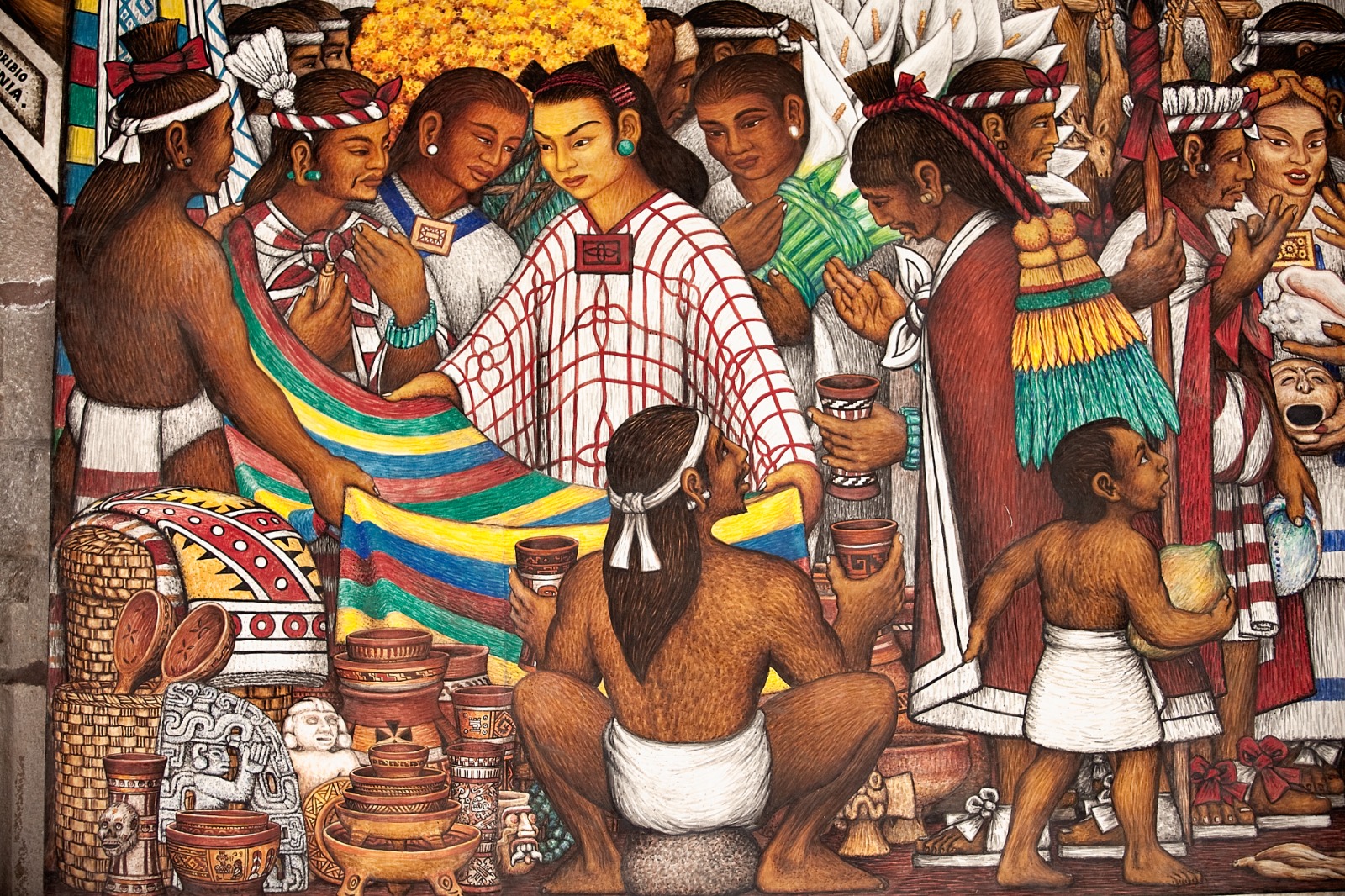Murals of the Government Palace
Pictorial version of Tlaxcala’s long history

The Murals within the Tlaxcala Government Palace are in many ways a pictorial depiction of the civic pride of the people of Tlaxcala. With a complicated and deep history, these were the enemies of the Mexica of ancient Tenochitlan, i.e.; modern Mexico City. They were then the co-conspirators and allies of Hernán Cortés, who helped to overthrow their enemies with the fall of Tenochitlan. As a reward, their culture was exported to many parts of colonial era especially with their horseman who established Charrería as a new animal husbandry in ranches across Mexico.
But real indigenous pride would wait hundreds of years to flower into what we know today. Part of our road to a better understanding began with the idea of these magnificent murals. They were first imagined by a group surrounding Tlaxcaltec poet and playwright, Miguel N. Lira (1905-1961) in 1953. They were finally begun by artist, Desiderio Hernández Xochitiotzin (1922-2007) in 1957. He'd just come back from studies in Europe and other parts of Mexico and the works remain his masterpiece, and are often cited as the final great works of the Mexican muralist movement of the mid-20th century.
His first stage lasted some ten years. Xochitiotzin researched, designed, sketched and prepared the walls - 285 square meters in all - on just the ground floor of the government palace. He continued work for the next 20 years, spending some 40 years on the entire project.
Details of the individual works are available to anyone who stops into visit. But conceived in an era that preceded our own age of color television monitors hanging in any available corner, these works are resonant with an entirely different mentality and sense of color. Many of them seem to glow as though lit from behind. The stories themselves are rich with humanity, suffering, and what often seems an intentional longing. That is the longing of the past for the future, and this makes the present seem the exact and most important moment to act.
Visitors often arrive to the center of Tlaxcala to see the many other sites and attractions. Discreet and unassuming, the murals are a treasure to be savored, and will make your trip to Tlaxcala that much more meaningful.